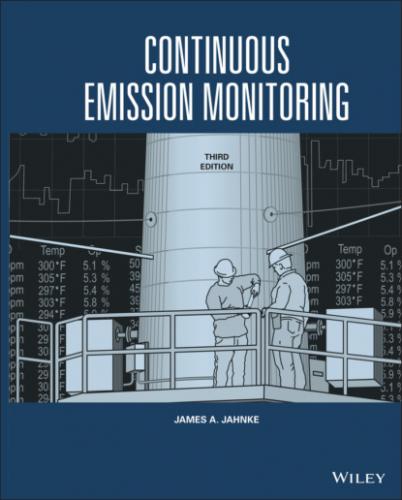Part 52 – Approval and Promulgation of implementation Plans Part 52.21 – Prevention of Significant Deterioration (PSD) For any source or a major modification to an existing source, located in an attainment area, where ambient air standards are met, a PSD permit must be granted. Once an area is in attainment, it is possible that the construction of a new source or modification of an existing source could lead to “significant” emissions that bring the area into nonattainment. To avoid this possibility a permit must be obtained by the source prior to the construction or modification. It must be shown whether a significant increase of emissions will occur, through a technical analysis and an air quality modeling, as specified in Part 52.21. One of the requirements of Part 52.21 is that the after construction or modification, the source must monitor mass emissions in tons per year of any pollutant designated under the New Source Review program for at least five years.
40 CFR Part 62 – Federal Requirements for Existing Units Not Covered by a State Plan
Part 62 gives requirements for existing sources that are not regulated by a state or tribal plan. The Subparts of Part 62 give Federal plans that can be delegated to the states for implementation by existing stationary sources. The applicable plan must be included in the Title V Permit for the affected source. Part 62 addresses a variety of incineration facilities listed in Table 2‐3. For a number of the sources, options are offered for using CEM systems instead of periodic performance testing.
40 CFR Part 70 – Title V Operating Permits
Congress established the Title V Operating Permit Program under the 1990 Clean Air Act Amendments. Under the program, major sources are required to obtain operating permits, operate in compliance with the permit, and certify annually that they are in compliance with the permit requirements. Most permits are issued by state and local agencies following the requirements of 40 CFR Part 70. Federal permits can be issued following 40 CFR Part 71.
TABLE 2‐3 Summary of 40 CFR 62 Monitoring Requirements for Existing Units Not Covered by an Approved and Effective State or Tribal Plan
| Source Category | Part 62 Subpart | Affected Units | Effective Datea,b | CEM Requirements | CFR Monitoring Reference |
|---|---|---|---|---|---|
| Large municipal waste combustion units | FFF | > 250 tpd | Constructed before 9/20/94 | Opacity As per 40 CFR 60.8b Subpart Eb | 62.14105 62.14109 60.58b |
| Hospital/Medical/Infectious Waste Incinerator (HMIWI) | HHH | Large Medium Small Small Rural | Constructed before 12/1/08 | Options for SO2, NOx, CO, HCl, O2, D/F, PM CEMS, Bag leak detector | 62.14452 |
| Commercial and Industrial solid waste Incinerators (CISWI) | III | Combustion Units | Constructed before 11/30/99 | Bag leak detector if FF | 62.14690 |
| Small municipal waste combustion units | JJJ | >35 tpd < 250 tpd | Constructed before 8/30/99 4/6/10a | Opacity SO2, CO NOx (Class 1)b O2 or CO2 | 62.15170 62.15175 |
| Sewage sludge incineration units | LLL | Combustion units | Constructed before 10/04/10 | Bag leak detector if FF Options for SO2, NOx, CO, HCl, O2 or CO2, D/F | 62.15960 62.15980 62.16015 |
a Modification began before this date
b Units > 250 tpd capacity
States issue operating permits for both existing and new stationary sources.
An operating permit may include conditions that require the installation of CEM systems. States may prepare rules for existing sources that are more stringent than those promulgated by the federal agency (Kerstetter 1985). As a result, the stringency of state CEM rules may extend beyond those established for similar sources regulated under NSPS. Monitoring of gases such as HCl or volatile organic compounds may be required, or process cutoffs for excess emissions or real‐time telemetry may be required in the permit. Sources often agree to very stringent CEM requirements to expedite approval of the operating permit.
Federal Programs Delegated to the States
Most states have received delegation by the U.S. EPA to regulate the emission sources affected by the following federal rules:
Part 60 New Source Performance Standards
Part 64 Compliance Assurance Monitoring.
Parts 266 and 503 Hazardous and Municipal Waste Incineration
In implementing these programs, states have developed regulations to assure that affected sources have installed required CEM systems, to see that they are properly certified, and to receive and process excess emission reports and compliance data as required by the applicable rule.
Part 96 Cross‐State Air Pollution Rule (CSAPR)
The Cross‐State Air Pollution Rule, of 40 CFR 96, evolved from the Clean Air Interstate Rule (CAIR) and the NOx Budget Program (NBP). After the promulgation of Part 75 and the implementation of the acid rain program, significant progress was made in reducing SO2 and NOx emissions. However, even with 50% reductions in SO2 and NOx emissions, critical load was not being reached. “Critical load” is the level of emissions below which harmful effects to the environment do not occur. Studies indicated that reductions on the order of 75% on top of the previous 50% reductions would be necessary for SO2 and NOx to meet ambient air standards for ozone and particulate matter, as well as
